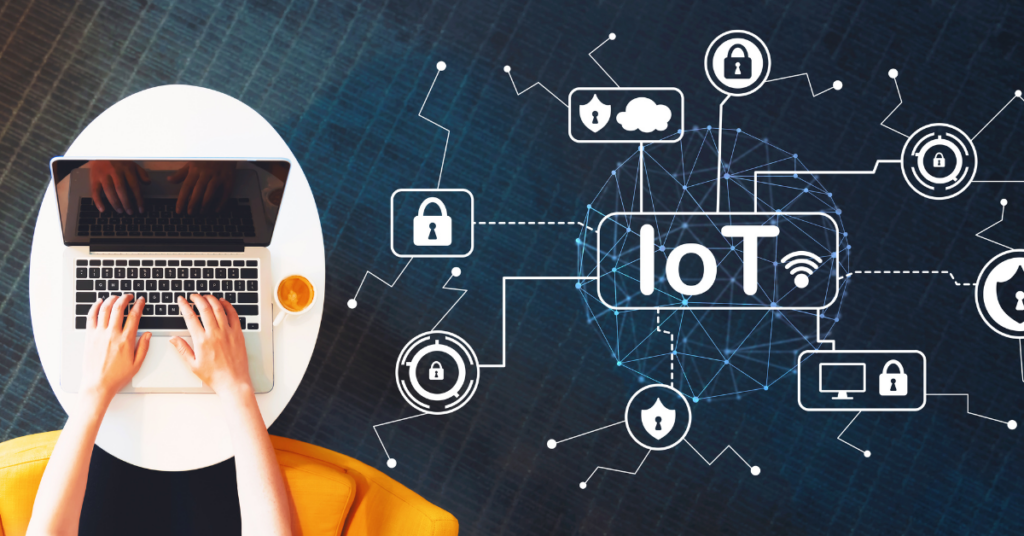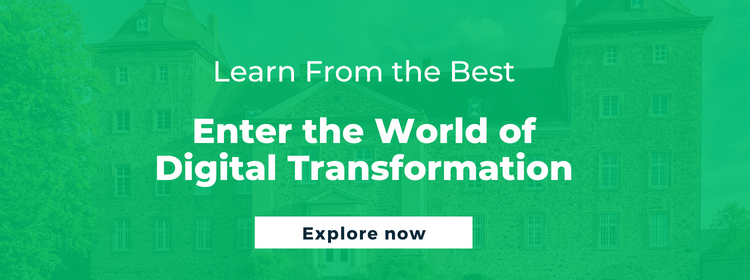What is IoT Data Analytics and How Can Brands Leverage it:

- What is the Role of IoT Data Analytics in Brand Marketing?
- How Can Brands Collect and Analyze IoT Data Effectively?
- What are Some Real-World Examples of Brands Leveraging IoT Data Analytics?
- How Does the Utilization of IoT Data Analytics Impact Consumer Behavior Insights?
- What are the Challenges and Limitations of Utilizing IoT Data Analytics for Brands?
The Internet of Things (IoT) is reshaping how brands engage with consumers, marking a significant shift in the digital world. IoT data analytics is at the heart of this transformation, offering deep insights into consumer behavior and enhancing operational efficiency. By the end of 2023, the global investment in IoT technology reached an impressive $805 billion, signaling its growing importance in the market. This hefty investment underscores the vital role of IoT data analytics in making sense of the enormous data generated by connected devices. This blog aims to explore the dynamic realm of IoT data analytics and demonstrate how brands can leverage this technology to achieve remarkable success.
What is the Role of IoT Data Analytics in Brand Marketing?
1. Understanding Consumer Preferences
IoT data analytics offers an invaluable perspective on consumer behavior, revealing their preferences and habits. This technology enables brands to tailor their marketing strategies with precision, ensuring they meet the specific needs of their target audience. By analyzing data from IoT devices, companies gain insights into what drives customer decisions. Additionally, this approach helps identify emerging trends, allowing brands to stay ahead in their market.
2. Enhancing Customer Experience
One of the IoT insights for brand success includes enhancing customer experience. By leveraging data from IoT devices, brands can offer personalized services and products, catering to individual customer preferences. Furthermore, IoT data analytics enables brands to anticipate customer needs, offering solutions even before the customer explicitly expresses them.
3. Developing Targeted Marketing Strategies
IoT is instrumental in developing targeted marketing strategies. These strategies are based on concrete data rather than assumptions, ensuring marketing messages resonate with the intended audience. By understanding customer behavior through IoT data, brands can create more relevant and appealing marketing campaigns. Additionally, this data-driven approach allows for the optimization of marketing resources.
4. Fueling Product Development and Innovation
IoT data analytics significantly enhance product development and innovation. Brands can use these insights to innovate, creating products that meet customer needs and preferences. This proactive approach to product development keeps brands ahead of the competition as they constantly evolve based on real-time customer data. Moreover, IoT data can reveal gaps in the market, presenting opportunities for brands to introduce novel products or services.
5. Measuring Campaign Effectiveness
IoT data analytics gauges the effectiveness of marketing campaigns more accurately. This technology provides brands with real-time feedback on how their marketing efforts are faring. In essence, this agility in marketing is crucial in a fast-paced market, where customer preferences and market dynamics can change rapidly. Therefore, IoT data analytics measures campaign effectiveness and empowers brands to be more responsive and adaptable in their marketing strategies.
How Can Brands Collect and Analyze IoT Data Effectively?

1. Setting up Robust IoT Infrastructure
Establishing a robust IoT infrastructure is essential for effective IoT data analytics. This process involves deploying interconnected devices that collect valuable data. Additionally, these devices form the backbone of any IoT-enabled data analysis strategy, which is crucial for brands leveraging IoT data.
2. Employing Diverse Data Collection Methods
Moreover, brands leveraging IoT data must use various data collection methods. These methods ensure a comprehensive understanding of operations and consumer behavior. Moreover, diverse data sources enrich the analysis, providing a complete picture essential for data-driven brand strategies.
3. Prioritizing Data Storage and Management
Secure and efficient data storage and management systems are crucial for handling the influx of information from IoT devices. Furthermore, well-managed data is key to extracting meaningful insights, a vital aspect of IoT analytics for businesses.
4. Utilizing Analytical Tools and Techniques
Analytical tools and techniques are employed to decipher collected data. These tools turn raw numbers into actionable insights. Thus, they are integral to IoT data analytics, driving data-driven brand strategies.
5. Ensuring Data Security and Privacy
Data security and privacy are paramount in IoT analytics for businesses. Brands must protect consumer information while adhering to regulations. Therefore, security measures are not just necessary but mandatory in handling IoT data, ensuring IoT insights for brand success.
6. Integrating Insights With Business Strategies
This step is crucial for brands to align IoT insights with overall business goals. Doing so ensures that every decision is data-driven and strategically sound, fostering IoT insights for brand success.
ALSO READ: What is Digital Transformation and Why Does it Matter?
What are Some Real-World Examples of Brands Leveraging IoT Data Analytics?
1. Innovations in the Retail Sector
In the retail sector, IoT data analytics has been a game-changer. Brands like Walmart use IoT for inventory management and enhancing customer engagement. In essence, this approach dramatically improves the overall shopping experience, showcasing the effectiveness of brands leveraging IoT data.
2. Advancements in Smart Home Devices
Smart home device manufacturers, such as Amazon (Alexa) and Philips (Hue), leverage IoT data analytics to refine their products. The aim is to ensure that these products effectively meet consumer needs, making IoT data a crucial tool for product enhancement.
3. Improvements in Health Care
IoT data analytics plays a critical role in this field, with companies like Medtronic leading the way. They use IoT technology to monitor patient health and improve treatments, enabling more personalized and effective solutions.
4. Enhancements in the Automotive Industry
The automotive industry, including brands such as Tesla and BMW, uses IoT data analytics to enhance vehicle telematics and user experience. This application leads to more intelligent, more connected vehicles, significantly improving the driving experience.
5. Precision Farming in Agriculture
Companies like John Deere and Monsanto employ IoT data analytics for precision farming in agriculture. In essence, this technology optimizes crop management and yield, leading to more efficient and sustainable farming practices.
ALSO READ: Learn How Digital Technologies Can Be Used in Education Today
How Does the Utilization of IoT Data Analytics Impact Consumer Behavior Insights?

1. Gaining Real-Time Customer Insights
IoT data analytics provides significant advantages in understanding real-time customer needs. Brands leveraging IoT data can respond promptly and effectively, enhancing customer relations. Additionally, this immediate insight allows for more agile business responses, which is crucial for data-driven brand strategies.
2. Forecasting Future Trends With Predictive Analysis
Predictive analysis, an essential aspect of IoT data analytics, enables brands to anticipate future consumer trends. They can stay ahead of the market curve, adapting to changes swiftly. Thus, predictive analytics becomes a strategic tool in market planning, integral to IoT analytics for businesses.
3. Enhancing Customer Engagement Through Personalization
Personalization of services, made possible by IoT data analytics, significantly boosts customer engagement and satisfaction. This approach strengthens brand loyalty and retention, as customers feel more valued and understood.
4. Customer Feedback and Improvement
Using IoT for real-time feedback significantly enhances product and service improvement. Consequently, this direct feedback allows for rapid adjustments and enhancements to products or services. Furthermore, real-time responses enable companies to address customer issues swiftly, improving overall satisfaction.
5. Market Segmentation
Segmenting customers more effectively is a significant advantage of utilizing IoT data. Brands can analyze detailed data from IoT devices to identify distinct customer groups. Additionally, this segmentation is based on actual usage patterns and preferences, providing a more accurate customer profile. As a result, marketing efforts become more targeted and efficient.
6. Brand Loyalty and Retention
IoT analytics significantly enhances customer loyalty and retention. By providing insights into customer behavior and preferences, brands can create more personalized experiences. Furthermore, customized interactions foster a deeper connection between the brand and its customers. IoT data also helps predict customer needs, allowing brands to offer solutions and services proactively.
ALSO READ: The Top 10 Risks Associated With the Internet of Things
What are the Challenges and Limitations of Utilizing IoT Data Analytics for Brands?
1. Data Overload Management
Handling the vast amount of data generated is a significant challenge in IoT data analytics. Brands leveraging IoT data often struggle with processing and interpreting this information.
2. Technical Challenges
Issues related to IoT device integration and compatibility pose technical challenges. These issues can hinder the seamless operation of IoT data analytics systems. Furthermore, ensuring that different IoT devices and platforms work together effectively is crucial for brands leveraging IoT data.
3. Data Privacy and Security Risks
Addressing concerns related to data breaches and privacy is paramount in IoT data analytics. Brands must implement stringent security measures to protect sensitive information. Moreover, as IoT analytics for businesses evolve, so do the risks associated with data privacy and security.
4. Cost Implications
The financial investment required for IoT infrastructure is a significant consideration. Setting up and maintaining IoT systems involves substantial costs. For brands leveraging IoT data, the return on investment must justify these expenses.
5. Regulatory Compliance
Navigating the legal aspects of using IoT data is a complex challenge. Brands must comply with various regulations and laws, especially concerning data usage and privacy. Moreover, as IoT insights for brand success grow, so does the need for adherence to regulatory standards. Therefore, legal compliance is a critical aspect of utilizing IoT data analytics effectively.
ALSO READ: Top 7 IoT Trends That Will Shape the Digital World in 2023
With the expected surge to 30.9 billion IoT-connected devices by 2025, the importance of mastering IoT data analytics is more crucial than ever for businesses. If you want to stay ahead in this rapidly evolving digital landscape and explore IoT data analytics further, consider joining Emeritus’ digital transformation courses and unlock the full potential of IoT insights for your brand’s success
Write to us at content@emeritus.org






